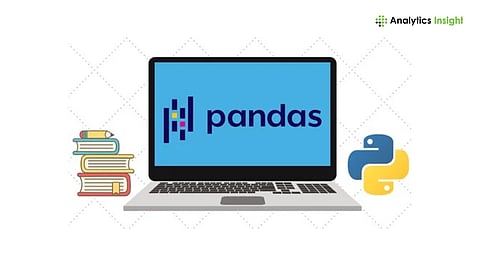Best Pandas Courses to Boost Your Skills This Weekend
Overview:
Pandas helps organize, clean, and analyze real-world data with simple commands.
Short weekend Pandas courses make learning fast, practical, and beginner-friendly.
It builds strong data skills useful for projects, reports, and career growth.
Data is being generated at a dramatic rate. This large volume of data offers both opportunities and challenges for businesses. Analyzing raw information and deriving actionable insights can help companies make informed decisions that support future growth. Pandas, a Python library, is one of the most basic yet effective tools to analyze data.
Professionals can depend on Pandas to organize and clean files and find patterns quickly. This article introduces some of the best Pandas courses for beginners to help build the foundational skills.
Best Pandas Courses in 2025
Below are some of the top-rated online courses that teach the basics of data cleaning, analysis, and visualization for better decision-making:
Codecademy: Learn Data Analysis with Pandas
Codecademy‘s course takes about six hours to cover the important topics under Pandas. It explains how to read files, clean data, and explore tables using simple commands. The lessons are short and interactive, keeping learners active and interested.
Why It’s Good: It is clear and easy to follow for beginners.
Best For: Learners who know basic Python and want to try working with real-world data samples.
Hyperskill: Pandas for Data Analysis
Hyperskill course by JetBrains Academy teaches Pandas through small projects. Learners work on simple problems like checking sales data or combining files. The course includes concepts such as Series, DataFrames, grouping, and merging step by step.
Why It’s good: Effective learning with hands-on practice.
Best For: Learners who learn better from solving tasks instead of watching long videos.
Also Read: Pandas vs Polars: Performance Comparison & Which to Choose in 2025
Coursera Course from Duke University: Pandas for Data Science
The Coursera course is part of a larger data science program offered by Duke University. Trainees learn how to read, clean, and combine different datasets using Pandas. The examples are easy to follow and based on real-world information.
Why It’s Good: It gives a smooth and simple start with Pandas.
Best For: Learners who already know Python and want to get better at data work.
Coursera: Python and Pandas for Data Engineering
Python and Pandas for Data Engineering is a Coursera course that shows how Pandas DataFrames can be used to clean, filter, transform, and aggregate large datasets. Students learn how to automate data processing tasks and build ETL pipelines.
Why It’s Good: It links Pandas learning to jobs that use data regularly.
Best For: Learners who want to see how data skills are employed in the workplace.
DataFlair: Free Pandas Course for Beginners
DataFlair offers a Pandas course for free. It covers the foundation of the Pandas library, such as Series and DataFrames. It teaches learners to perform sorting, merging, and grouping operations and descriptive statistics. Learners receive a free certificate after finishing the course.
Why It’s Good: It is short, free, and can be done easily in a weekend.
Best For: Beginners who want to start learning Pandas without any cost.
Also Read: Data Analysis with Python: Using Pandas, NumPy, and Matplotlib
Making the Most of the Weekend
You can learn the basics of Pandas over a single weekend by dedicating three to four hours a day. Practicing with relatable datasets such as cricket scores, movie ratings, or local survey results can make the learning process more engaging and easier to understand.
The main skills to focus on are:
• Reading and writing data from files.
• Cleaning missing or unformatted data.
• Grouping and joining data to find patterns.
• Making small charts or tables to see results clearly.
Conclusion
Pandas is not just for coders. It is a valuable tool for anyone who works with numbers or large volumes of data. Students, journalists, and young professionals can use it to analyze data and share information clearly. A short weekend course can equip users with basic skills and make data handling easier. With regular practice, Pandas can become a simple yet powerful tool that can help you turn numbers into powerful insights.
FAQs:
1. How long does it take to learn the basics of Pandas for data analysis?
Most learners can understand Pandas basics in a weekend by spending 3-4 hours each day on short, focused lessons and examples.
2. Which Pandas course is best for complete beginners with no experience?
The free DataFlair course is ideal for beginners. It uses simple examples, explains key concepts clearly, and offers a certificate.
3. What skills can be gained after completing a weekend Pandas course?
Learners can read files, clean messy data, group and join datasets, and make simple charts or tables to interpret results clearly.
4. Do these Pandas courses require prior knowledge of Python programming?
Some courses, like Codecademy and Duke University’s Coursera program, recommend knowing basic Python before starting Pandas.
5. How can Pandas help students and professionals in their daily work?
Pandas simplifies handling large sets of data, saves time on reports or projects, and helps present clear and accurate insights.
.png)

